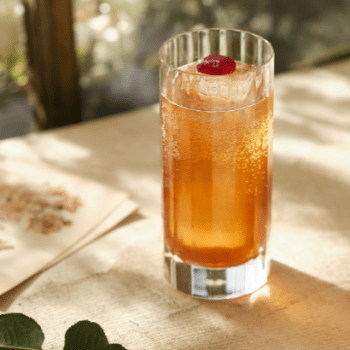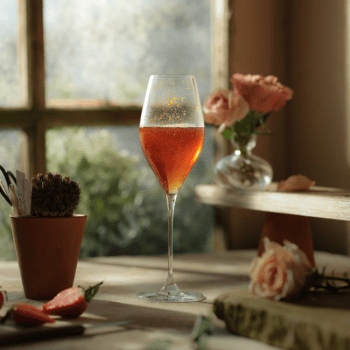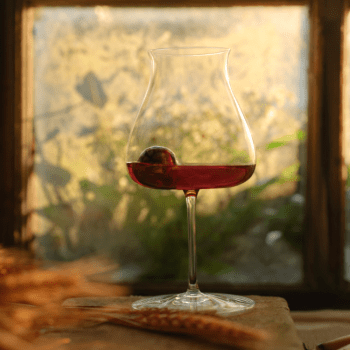Gleneagles’ American Bar spotlights roses in new menu
The American Bar at Gleneagles hotel in Perthshire has launched Rose Compendium, a cocktail menu inspired by the rose family of flowering plants.

Led by Michele Mariotti, head of bars at Gleneagles, the Rose Compendium showcases the bar’s appreciation for the past alongside its reputation for cutting-edge drinks development and ongoing commitment to environmental responsibility.
Speaking to The Spirits Business, Mariotti shares how the 19 serves that form the new menu, which launched on 5 February, are the result of a year and a half of research and development that started with “a couple of brainstorming sessions” at a team retreat – the way most of the hotel’s menus begin life, he says. “We chuck as many ideas as we can on the wall – some make it, some don’t – then basically we have a time of digesting and then we try to shape it into something. It takes quite a bit of time.”
Mariotti reveals this menu was ultimately inspired by a copy of The Rose Annual published in 1925 that the team came to possess. He explains it is “essentially a book that includes all the latest and greatest bits about roses – what to plant, what not to plant, or how to grow things. It’s quite an interesting read. It has a lot of ads from the time, which we find very, very interesting. And it’s very image-led – a beautiful piece of literature, but still very, very informative.”
However, he jokes, the book is also full of mistakes, “because it was published pre-ChatGPT,” something that is referenced in some of the drinks that feature on the new menu, as well as in its predecessor, the Book of Berries.
“We thought: why don’t we make something that pays homage to such a beautiful piece of literature? And we came up with the Rose Compendium.”

The Rose Compendium
Mariotti explains how each serve, in some way, belongs to the rose category. “We picked nine that we really, really liked, and we decided to split them into two, so each of the drinks has two different iterations of our interpretation of locality or terroir.”
Terroir, he says, can be very difficult to bring to life in bars, on account of venues often having contractual obligations to spirit brands that bear no relevance to the focus terroir of a drink. In addition, it can be hard to find a spirit that comes from the immediate vicinity. He says: “We decided to have a look at it and think: how can we bring this to life, to promote alcoholic ingredients in a meaningful manner?”
The answer lay in dividing the bartending team across the estate into nine different groups, one per rose. Each group was given two tasks. “Task number one was to find someone [or a brand] in Perthshire – or broader Scotland if you can’t find local – that works with the rose. It doesn’t matter what they do: it could be yoghurt, it could be a gin, a jam.
“The second part of the task was to look at ways we use these roses within our own ecosystem, and find ways to reuse some of the secondary ingredients. We’ve noticed that with some secondary ingredients – like skins, seeds, that sort of thing – sometimes you get way more flavour out of them than the fresh ingredient itself.” He adds that over a year and a half, the team were able to forge “a lot of meaningful relationships with the suppliers around us”.
“One of the things we find quite fascinating is the amount of love people have for the property first and foremost, but then secondly was the amount of care they had in the things they were doing.”

The menu has been designed to echo a botanist’s journal – wrapped in a clay-coloured cover and featuring hand-annotated notes, the techniques used, illustrations, glassware details and an extensive glossary to explain any complex or unusual terms. Mariotti explains it was curated to be read in as much detail as the consumer wants.
“We wholeheartedly believe in accessibility across all of our menus or bars,” he says. “So we also believe that a very good content-led book like this needs to have the capability for a guest to opt out.” As such, he says, the menu is divided into three different layers.
“For the people who cannot be bothered – such as millennials like myself – we always have a ‘too long to read’ section below our menu, where we have just a list of the drinks and the different roses and a flavour map to help guests choose. So if anyone does not want to interact with the menu too much, they can just stop at page three and four, and then focus on their wonderful date for the evening.”
Meanwhile, he says, for people who want to know more, “we have a full page for each of the roses where we talk in detail about who we work with, how we work with these people, and what they do.
“Lastly, for the nerds like myself, right at the back, we always have a glossary. This is called the Rose Analysis, where we talk about all the weird verbiage we might use throughout our menu. So, if someone wants to read more, this is rich with content, and they interact with us from this level.”
Intentional mistakes
Each cocktail on the menu highlights one of nine core ingredients of the rose family – apple, pear, quince, cherry, peach, plum, strawberry, blackberry, and almond – with each ingredient showcased in two iterations. While one celebrates components from Gleneagles’ ecosystems, repurposing kitchen ingredients to minimise waste, the other is hyperlocal, using Scottish flora from suppliers such as Cairn o’ Mohr and Buck & Birch.

Notable serves include the Strawberry Leaf, inspired by a classic Italian apéritif known as the Rossini, made using green strawberry tips to impart additional flavour into a mix of The Macallan 18-year-old Sherry oak whisky and Champagne.
The Spiced Marzipan – a modern take on an El Presidente – blends Ron Zacapa Centenario 23-year-old rum with nougat and amaro. For this serve, the team incorporated marzipan from Gordon & Durward, a local sweets producer in the Scottish town of Crieff, to create the harmonious blend of sweet, nutty and citrusy flavours.
Taking centre stage of the menu is the bar’s signature cocktail, Barley, which is a reimagining of the ‘iconic’ Scotch whisky cocktail, the Rob Roy.
However, Mariotti explains that the inclusion of this serve is a deviation from the rose family theme: “In case you’re looking at barley and thinking ‘it doesn’t sound like a rose’, you are 100% correct. We’ve done this on purpose because, as I mentioned earlier, all of the reference books were full of mistakes. We deliberately include a blatant mistake in all our menus – and barley is the one for this menu.”
Choosing a Rob Roy was a “logical choice”, he explains. “It’s first of all an underrated classic, because the American counterpart – the Manhattan – tends to get the lion’s share of the attention. But we believe that Scotch offers a lot of diversity, and it can be such an interesting and peculiar spirit to work with.”

As such, in the curation of this cocktail, Mariotti was keen to shift the focus away from the choice of vermouth and back to the whisky. “One of the things I always struggled to reconcile with was the fact that for the Rob Roy, you always have a sweet, dry and perfect iteration. It’s always been vermouth-led, which I couldn’t really get my head around. I always thought: this is a whisky drink, so whisky should be doing the talking, right?”
With this in mind, Mariotti and his team chose to create a range of Rob Roy serves that emphasise the whisky while still offering the classic dry, sweet, and perfect variations.
To do this, the team entered a collaborative process with The Glenturret Distillery, which Mariotti says was a “natural fit” on account of the partnerships the two brands have run in the past, as well as the expertise of the team involved.
“It was a very interesting process where we started by defining what dry, sweet and perfect means in a whisky ecosystem. Then the team at Glenturret put together a number of whiskies that were put through a sampling process, narrowing it down to three.”
However, to achieve the dry, sweet and perfect flavour profiles the team were after, the whiskies chosen did not all fit into the official Scotch whisky categorisation. The spirit selection for the dry iteration is just over a year old – too young to be classed as a Scotch whisky – and the sweet – a 38-year-old Port Pipe malt – clocking in under the required 40% ABV of a Scotch whisky.
Non-alcoholic serves
The menu also includes four non-alcoholic serves that are adaptations of some spirit-based serves on the menu. Mariotti explains that to ensure the essence of the drink was not lost with the removal or replacement of the alcohol, they selected cocktails that did not have a spirit as the central component, but rather opted for serves that championed “a fantastic jam that we found, or an incredible secondary ingredient that we’ve discovered in our hotel”.
“When that was the case,” he says, “it allowed us to rethink the drink ever so slightly. Instead of trying to supplement the spirit with something else, we’d look at what other flavours would complement it. Sometimes it’s a spirit, sometimes it’s not. I think it is quite mechanical to just delete the spirit and add a non-alcoholic version of it, and it doesn’t always work.”
Last year, the American Bar at Gleneagles was awarded two Pins in the inaugural Pinnacle Guide.
Related news
Sastrería Martínez unveils new cocktail menu
